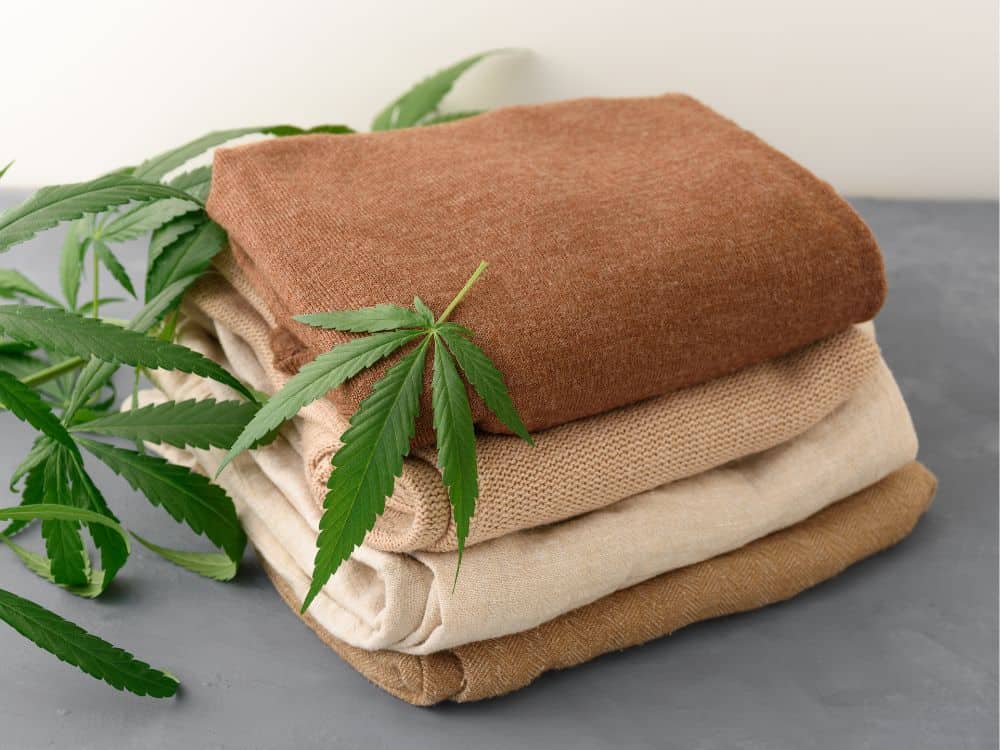Recommended Reasons On Choosing Hemp Clothes
Wiki Article
What Makes Hemp More Sustainable Than Cotton In Terms Regarding Water Usage, Pesticides Or Herbicides?
Hemp is considered a viable crop if compared to cotton with regard to the use of water, pesticides and herbicides for several reasonswater Usage-
Hemp- Hemp is a plant with a very low requirement for water compared to other crops, like cotton. It is a drought-tolerant and low-irrigation plant. Hemp is often grown using rainwater in many areas. It's a great water-efficient plant.
Cottonis known to be water-intensive. The cultivation of cotton often requires extensive irrigation that can reduce local water resources and result in water shortages in areas that are water stressed. The cultivation of cotton is highly water-intensive, which has led to concerns over its sustainability.
Pesticides and herbicides
Hemp: Hemp has a natural resistance against numerous pests. This decreases the need of synthetic pesticides. Some hemp plants may require pest control measures. However, the overall use of chemical inputs for many crops is lower, such as cotton. Hemp cultivation is almost free of pesticides.
Cotton farming - Traditional cotton farming generally relies heavily on herbicides and pesticides that are synthetic to manage weeds and pests. The application of these chemicals could result in negative environmental effects such as water and soil contamination, harm to species that are not targeted, and the development of pesticide-resistant pests.
In summary hemp is considered to be an environmentally sustainable alternative to cotton in terms of water usage, pesticides, and herbicides.
Hemp can be grown using only a little water, rainwater or irrigation.
Hemp has natural resistance to numerous diseases and pests and reduces the need for synthetic pesticides.
Hemp production uses less synthetic pesticides compared to cotton.
It is essential to remember that the practices used to sustain farming and environmental protection may vary from one region or grower to the next. Organic farming practices can also improve sustainability by decreasing the use of synthetic chemical and increasing the quality of soil. In assessing the environmental impact of textiles and clothing choosing organic and sustainably produced fibers, whether cotton or hemp, could help reduce the ecological impact of the fashion industry. See the most popular hemp clothing for more info including mens hemp trousers, hemp yoga pants, patagonia volley shorts, organic hemp hoodie, hoodlamb jacket, hemp denim, hemp t shirts wholesale, hemp tee shirts, hemp boxer shorts, organic hemp underwear and more.

What Makes Hemp Clothing Superior In Terms Of Function And Technology Than Traditional Fibres.
Hemp clothing offers a variety of advantages in terms of performance and design over traditional fabrics, aswell being more eco-friendly. Here are a few examples of how hemp clothing can be a high-performance, eco-friendly alternative.
Hemp fibers have a superior capacity to wick moisture away and are permeable, meaning that hemp clothing is breathable and comfortable regardless of the weather. They are able to help remove sweat, keeping wearers cool and dry during the heat of summer.
Temperature Regulation
Hemp clothing is extremely thermoregulatory. It will keep you warm by trapping warmth close to your body and aid in keeping cool in hot weather. This natural control of temperature can reduce the necessity to change clothes frequently.
Durability-
Hemp fibers are known as being tough. Hemp clothing tends to be more robust, resistant to wear, and more durable than other fibers. This makes hemp garments can last longer, thus reducing the need for replacements and, therefore the environmental impact.
UV Protection
Hemp fibers help protect skin by blocking harmful UV rays. This is especially beneficial when it comes to outdoor activities and sports.
Biodegradability:
Hemp clothing biodegrades over time, so it will degrade when disposed. It's an excellent method to reduce the amount of textile waste and its impact on the environment.
Low Environmental Impact
Hemp production typically uses lesser synthetic herbicides or pesticides as compared to cotton. Hemp also requires less water, making it an environmentally friendly option. These environmentally friendly characteristics are boosted by organic hemp farming.
Carbon Sequestration
Hemp can be utilized to absorb CO2 from the atmospheric air. Hemp cultivation acts as a sink for carbon dioxide, reducing greenhouse gas levels.
Sustainable agriculture and crop rotation-
Hemp can easily be integrated into crop-rotation systems to improve overall soil health. It also lowers the possibility of soil depletion or accumulation of diseases. This sustainable farming method can help reduce environmental impacts.
Versatility:
Hemp fibers can be blended with other substances (such as organic Cotton or recycled polyester) to create eco-friendly and high-performance fabric blends. This flexibility makes it possible to make innovative and sustainable textiles.
Low Toxicity-
Hemp fibers have a low toxicity and don't require a lot of chemical processing for create. This reduces the negative impact of manufacturing textiles on the natural environment.
It is crucial to be aware that, while hemp has many eco-friendly, functional advantages, its overall sustainability also is dependent on other factors like the process of dyeing, transport and ethical practices for work. If you're looking to make an the right choice for the environment seek out clothing brands that prioritize sustainability and transparency by using hemp fibers and other environmentally-friendly materials in their clothing. See the best hemp clothing examples for blog examples including mens hemp t shirts, patagonia work pants hemp, hemp long sleeve shirt, patagonia hemp pants, hemp work pants, patagonia hemp pants, t shirt hemp, hemp shorts mens, hemp mens jeans, patagonia iron forge jacket and more.

What are the differences between bamboo and hemp fibers?
Hemp and bamboo are two different plant-based fibers used in the production of textiles, each with its unique qualities and characteristics. Here are the major distinctions between hemp and bamboo fibers. Plant Source-
Hemp fibers originate from the bast fibers that are located in the stalks. Hemp is versatile, fast-growing and was used in the production of various products for centuries.
Bamboo fibers are made from bamboo pulp. Bamboo is an extremely rapid-growing grass, renowned for its toughness and rapid renewal.
2. Fiber Characteristics-
Hemp The fibers of hemp are extremely durable and sturdy. They are some of the strongest natural fibers and they become softer after each washing. This makes them perfect for fabrics that last.
Bamboo- Bamboo fibres are silky soft with a smooth texture. Although they may not be as sturdy as hemp fibers and may be more fragile in certain instances, their comfort on the skin is greatly appreciated.
3. Texture and Feeling-
Hemp fabric is slightly coarse and has a textured texture. This is particularly true in its raw state. While it is an incredibly comfortable fabric, the texture is different from bamboo.
Bamboo- Bamboo is soft, smooth, and silky. It is often described by those who wear it as a mixture of cotton and silk.
4. Breathability, Moisture Wicking, and Breathability
Hemp- Hemp fabrics are naturally wicking away moisture. This allows for improved air circulation and also absorbs water. They are able to keep your body dry and cool in hot weather.
Bamboo Fibers- Bamboo fibres are known for their an excellent degree of breathability and moisture wicking. They contain micro-gaps, which enhance their ability to regulate temperature and humidity. This keeps you at ease in all circumstances.
5. Environmental Impact-
Hemp Hemp is a fiber which is considered green due to the fact that it needs minimal water, grows quickly, and has a high resistance to insects. It also reduces the use of herbicides and pesticides. It can also remove carbon dioxide from atmosphere as it expands.
Bamboo is renowned for being sustainable. It grows rapidly, requires only a small amount of water, and is able to be grown without synthetic pesticides or herbicides. Certain varieties of bamboo are thought to be very sustainable, for example Moso bamboo.
6. Processing-
Hemp- Hemp fibres need extensive processing to separate out the bast fibers on the outside and the woody core inside. The processing may include retting, or decortication.
Bamboo- Bamboo is typically made by a process known as the viscose-or rayon-process. This involves chemically breaking down bamboo pulp. Closed-loop systems can be used to reduce chemical waste in some bamboo textiles.
7. Versatility-
Hemp- Hemp is versatile It has many uses, such as building materials, clothing and textiles, and more.
Bamboo- Bamboo fibers are primarily used in textiles and clothing, however they can also be found in some other products like towels and bedding.
Both bamboos and hemps have advantages when it comes to sustainability and unique characteristics. The decision between the two depends on the characteristics you look for in a cloth and also your preference for the environment. Have a look at the recommended bamboo clothing for website recommendations including boody bamboo underwear, bamboo hoodie women's, bamboo sweater, rayon from bamboo fabric, men bamboo boxer shorts, bamboo baby clothes, mens boxer shorts bamboo, bamboo long sleeve shirt, bamboo sportswear, bamboo dress shirt and more.
